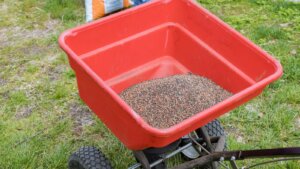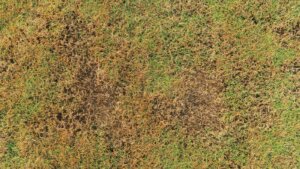There are a few reasons you should avoid scalping your lawn. First, it can lead to unsightly brown patches. It can make your grass more susceptible to disease and pests. But don’t worry, there are ways to avoid scalping while mowing and keep your lawn looking lush and healthy. Here are some essential tips for effective lawn care.
What is Lawn Scalping?
First, let’s define what lawn scalping is. It occurs when the grass is cut too short, removing much of the leaf blade and exposing the stem. This can cause the grass to look brown and can make it harder to recover. Scalping can occur if the mower blade is set too low, or if there are high spots in the lawn that the mower blade hits when mowing.
Why is it Important to Avoid Scalping Your Lawn?
When you scalp your lawn, you remove a significant amount of the grass blade. This can stress the grass and make it more susceptible to disease and pests. Additionally, scalping can lead to an accumulation of thatch – a layer of dead grass and debris that can prevent water and nutrients from reaching the soil.
How to Prevent Lawn Scalping
- Correct Mowing Height: One of the most effective ways to avoid scalping your lawn is to mow at the correct height. For most types of grass, it’s a good idea to set your mower so that it cuts the grass at a height of 2.5 to 3 inches. This will leave enough of the grass blade intact to help the lawn recover from mowing.
- Mow More Frequently: If your grass grows faster during certain times of the year, you may need to mow more frequently to prevent scalping. This is especially true for warm season grasses like Bermuda grass, which can grow rapidly in hot weather.
- Keep Your Mower Blade Sharp: A dull mower blade can tear the grass, causing damage that can lead to scalping. Make sure to sharpen your mower blades regularly to ensure a clean cut.
- Level Your Lawn: If your lawn is uneven, certain areas may be cut too short when you mow, leading to scalping. If you notice patches appearing on your lawn after mowing, you may need to level your lawn. This can be done by adding topsoil to low areas and then reseeding.
- Avoid Mowing Wet Grass: Wet grass can clump and cause the mower to cut unevenly, leading to scalping. Try to mow your lawn when it’s dry for the best cut.
Recovering from a Scalped Lawn
If your lawn is scalped, don’t panic. With proper lawn care, your grass should be able to recover. Water your lawn deeply and regularly to help it recover, and consider applying a restorative fertilizer to give the grass the energy it needs to grow back. If extensive parts of the lawn were scalped, you may need to reseed those sections.
Remember, the best way to avoid scalping your lawn is through regular lawn maintenance and care. By mowing at the correct height, keeping your mower blade sharp, and taking care of your lawn, you can keep your grass looking lush and healthy.
Summary: How to Mow Your Lawn Without Scalping
In conclusion, maintaining your lawn involves more than just running your lawn mower across it every once in a while. It’s about understanding how to cut your grass at the right height to prevent scalping the lawn, which can lead to unsightly brown patches. It’s about knowing the needs of your specific type of grass, such as cool-season grass, and adjusting your mowing habits accordingly.
It’s about being aware of the lawn levels and ensuring you’re not cutting the grass too short in certain areas. If you notice patches, don’t ignore them. Instead, take steps to stop patches from forming by giving the lawn a low, even cut. This will help maintain a beautiful lawn without scalping. Remember, the way you mow the lawn can have a significant impact on its health and appearance. The grass may need to be raked after mowing to remove any excess clippings and ensure a clean, even look. By following these tips, you can keep your lawn looking its best all year round.



